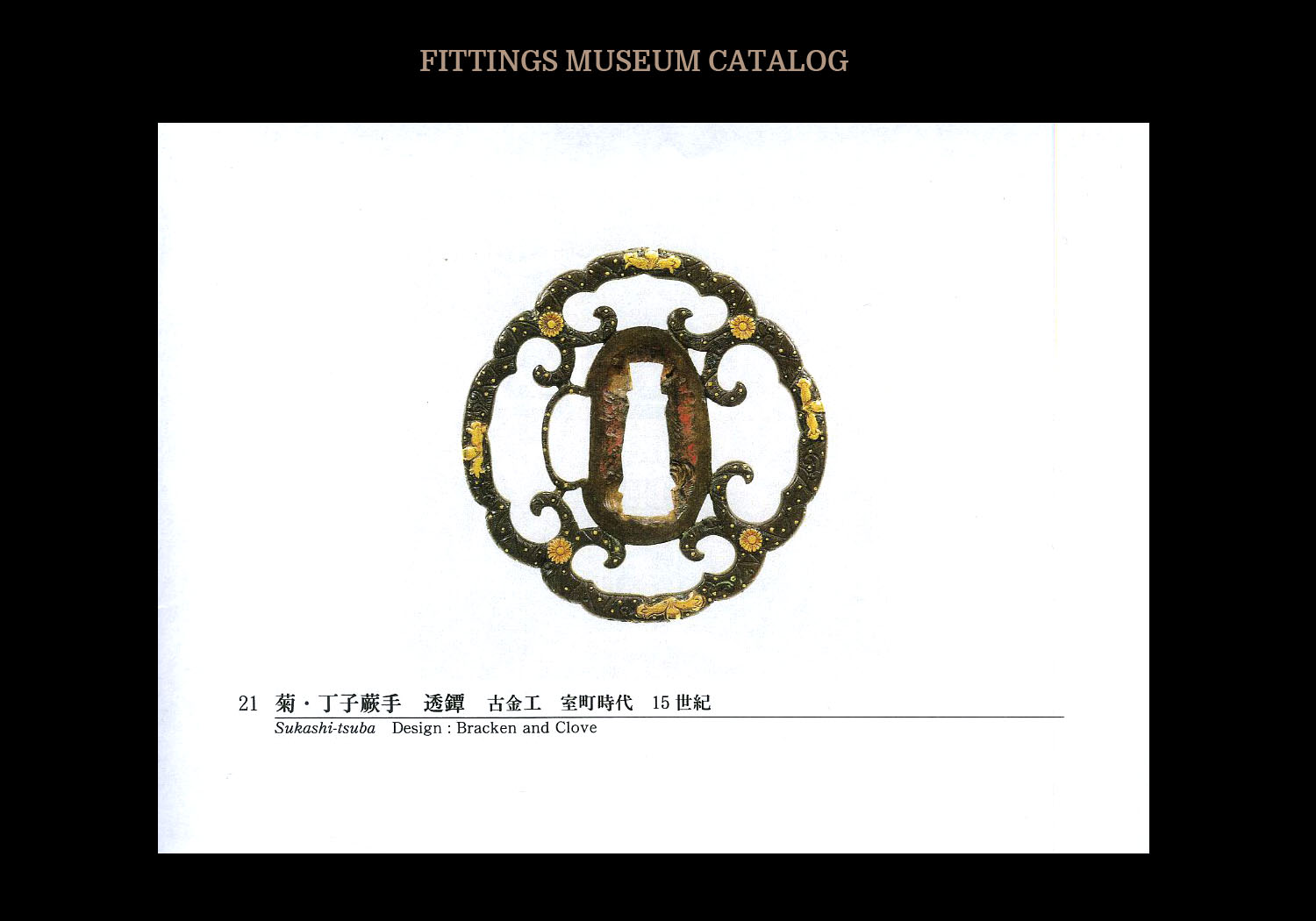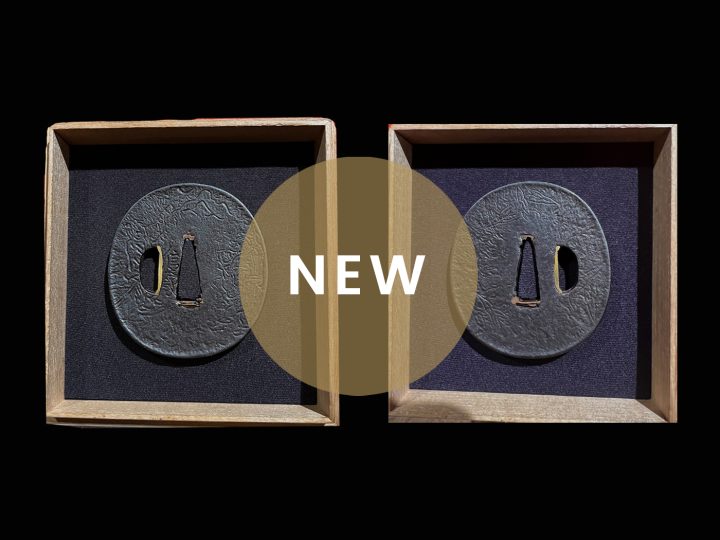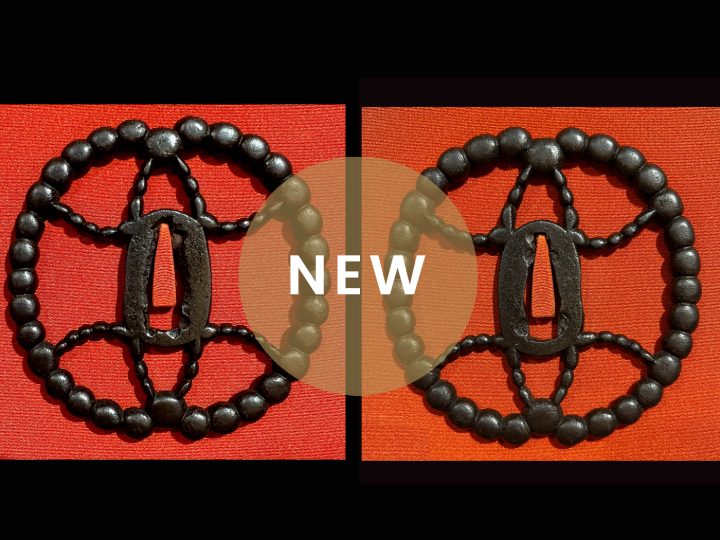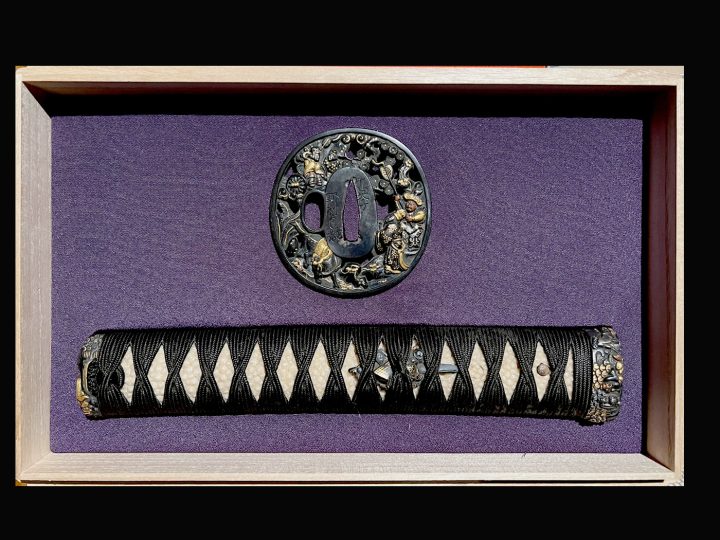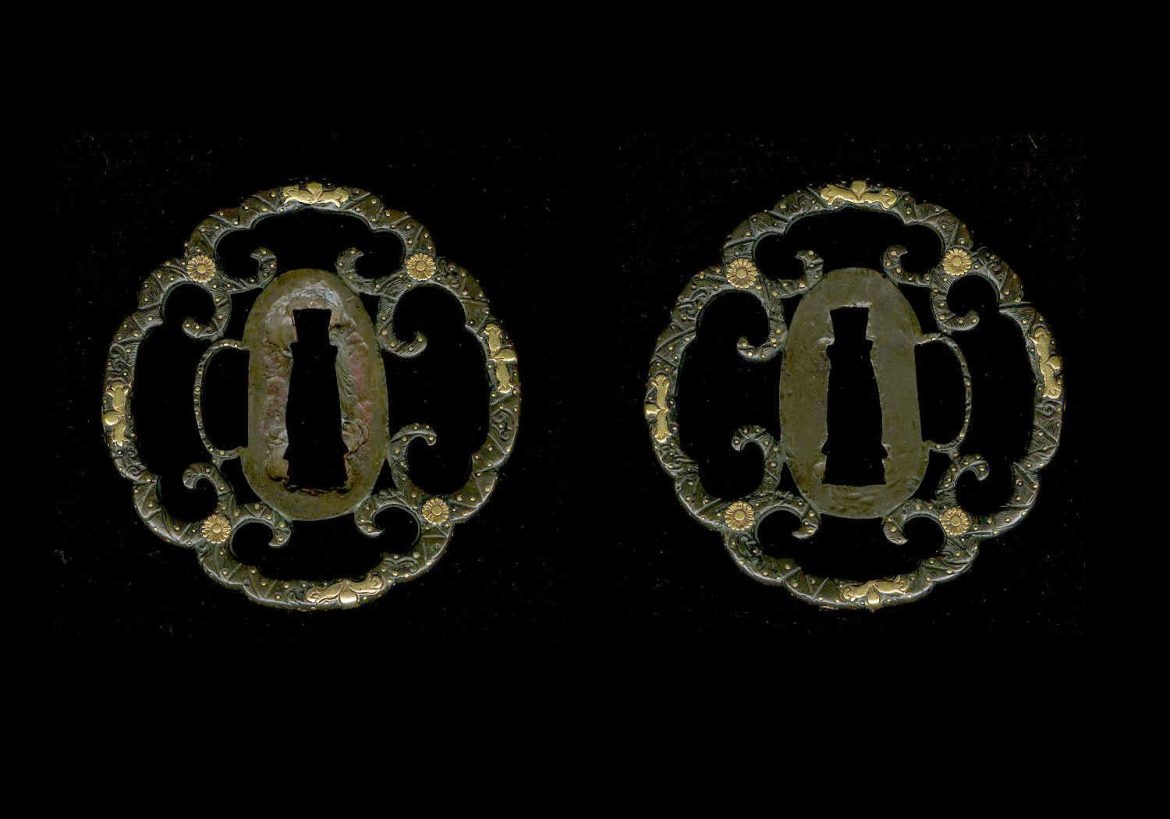
This is a splendid example of epitome of tsuba art from the early Muromachi Era (early 1400’s). It has been attributed to the Ko-Kinko school and designated as a Jûyô Tôsôgu (Important sword fitting) by the NBTHK. The condition is pristine and the quality is one of the best. The Jûyô kanteisho are translated as follows:
Designated Jûyô Tôsôguat the 49thshinsa held on the 9thof October, 2003.
Item: Tsuba with a scattering of four chrysanthemums and cloves with circular sukashi, unsigned, Ko-Kinkô (古金工).
Kanagawa Prefecture, Sakuma Kazuaki
Dimensions: Height: 7.1 cent.; Width: 6.9 cent.; Thickness at the Mimi: 0.5 cent.
Description: Irregular Mokkô-gata, shakudô with a wave finished surface, ji-sukashi, uttori-iro-e, and one hitsu-ana.
Period: first part of the Muromachi period.
Explanation: Regarding the Ko-Kinkô group, they have continued since long ago with a succession of works until the Momoyama period. This tsuba has been determined to be a work of the early part of the Muromachi period. As for the shape of this tsuba, it is a combination of four handles from a chest of drawers, and as an early kinkô work, it has unusual sukashi carvings. Regarding the carvings, the entire surface of the piece is covered in waves, and the ji-sukashi are carvings in a rounded style. There are chrysanthemums and cloves arranged around the tsuba and covered in uttori-iroe. The piece is comparatively thin, and overflowing with elegance. It displays splendidly brilliant workmanship. As a Ko-Kinkô tsuba, there are very few that are of such a high rank as this piece. This is a celebrated tsuba that is also in faultless condition.
This tsuba was formerly in the collection of the Japanese Fittings Museum and was published in their catalog.






